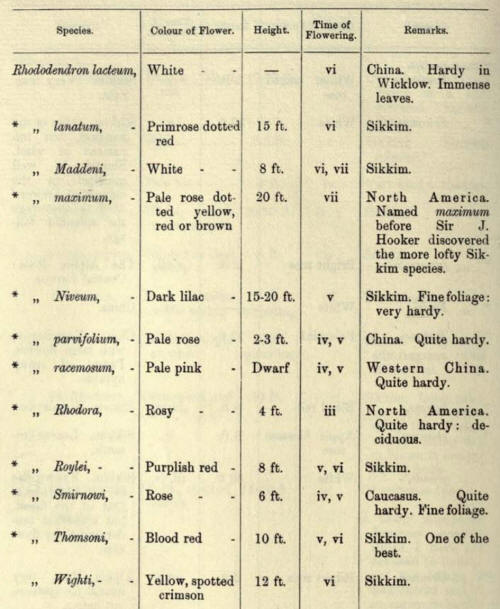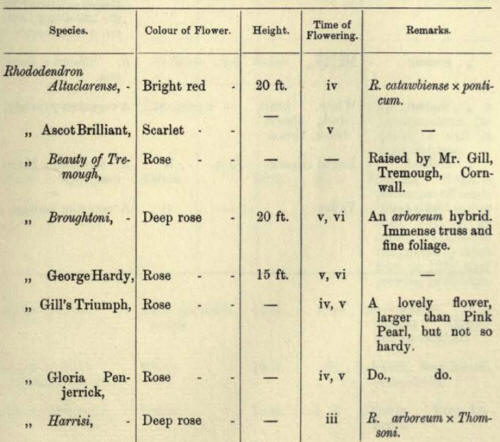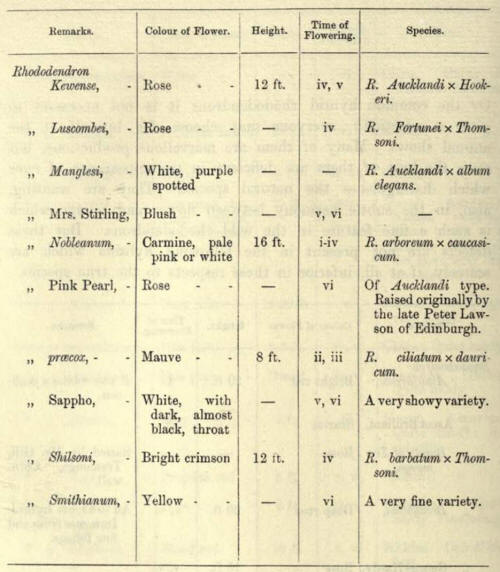|
MENTION may be made of a
few species of rhododendron which have been proved to endure the climate
of the West of Scotland as far north as Ross-shire. Partial shade
overhead is beneficial, and they must be completely sheltered from
violent winds. It is best to start them in a compost of peat and coarse
said in equal parts; afterwards they will thrive in any free or light
soil provided it does not contain lime in any form. The flowers of the
early kinds may be destroyed by frost in some seasons, but their beauty
is so great as to compensate for many failures by success in a
favourable year; and the foliage of most species is so decorative that
the plants deserve cultivation for that alone. What is most to be
dreaded is frost in April or May, after growth has begun. This too often
destroys the terminal shoots and buds, but their place will be taken by
the secondary ones. As most of these rhododendrons are costly, it will
be prudent to proceed tentatively at first with a few of the hardiest
species, which are marked in the following list by an asterisk (*), and
to give them every possible advantage of shelter from wind.
[The above was written
before the destructive frost of 24th April 1908, which caught early
rhododendrons in full growth and destroyed masses of bloom. Probably it
has also ruined the prospects of next year's blossom, for the secondary
growths are feeble and bear few flower buds.]




OF the common hybrid
rhododendrons it is not necessary to give a selection : everyone may
choose for himself at the annual shows. Many of them are marvellous
productions, but even the best of them are deficient in the appearance
of race which distinguishes the natural species. They are wanting, also,
in the subtle harmony between flower and foliage which is such a fine
feature in the wild rhododendrons. But these defects are not present in
the following hybrids which are scarcely, if at all, inferior in these
respects to the true species.

 |
